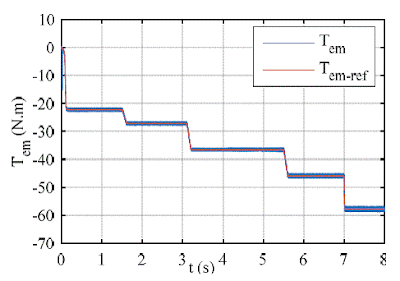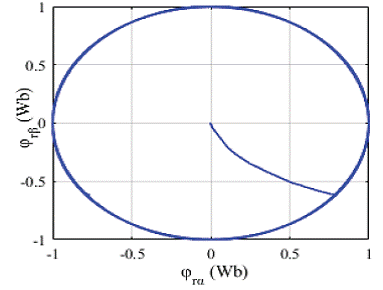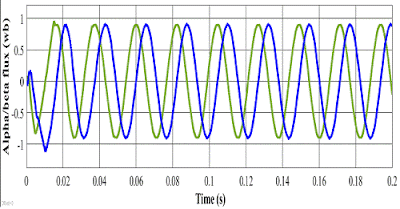ABSTRACT:
This paper described a Direct Torque Control (DTC)
applied to a Doubly Fed Induction Generator (DFIG) driven by a Wind Turbine
(WT) connected to the grid. This control strategy based on the regulation of
the flux and the torque, the currents and voltages are used to estimate the
torque and the flux and compare those magnitudes to the reference values, the
obtained results will be converted to digital form by hysteresis comparators.
The commutation table will use those values and the sector number to choose the
voltage vector. The aim of this study is to treat three modes that can drive
WT-DFIG system utilizing Maximum Power Point Tracking (MPPT) technique.
Computer simulation has carried out under MATALB/Simulink environment and the
obtained results demonstrate the effectiveness of the proposed control.
KEYWORDS:
1.
Direct Torque Control
2.
Doubly Fed Induction Generator
3.
Wind Turbine
4.
Wind Energy
5.
Maximum Power Point Tracking
SOFTWARE: MATLAB/SIMULINK
BLOCK DIAGRAM:
Fig.1. DTC Control applied to DFIG connected to the grid.
EXPECTED SIMULATION RESULTS:
Fig.2. Wind speed.
Fig.3. Cp (λ) Characteristic.
Fig.4. Mechanical speed (generator speed).
Fig.5. Waveform of Slip.
Fig.6. Electromagnetic Torque.
Fig.7.
Rotor and Reference flux.
Fig.8. The rotor flux.
Fig.9. Wave form of Rotor flux φrα and φrβ.
Fig.10. Rotor Current Ir(abc)
Fig.11. Rotor Reactive Power
Fig.12. Stator Current Is(abc)
Fig.13. Stator Power
Fig.14.
Rotor Power
Fig.15. The FFT analysis of phase (a) stator current (Synchronous mode).
CONCLUSION:
A
study of Direct Torque Control strategy applied to Doubly Fed Induction
Generator used for Wind Turbine Conversation system has been presented in this
paper. As known, the wind has a random movement imposing indiscriminate speed
for the turbine, therefore driving DFIG in different modes (sub-synchronous,
synchronous and super synchronous modes), those modes have been treated in this
work. The obtained results show clearly satisfactory performances, they showed
a good dynamic of the torque and the flux, low THD in synchronous mode and
constant stator frequency, while keeping a better precision of control, as well
as the efficiency of the control strategy leading to better performances.
REFERENCES:
[1]
C. J. Nobles, E. F. Schisterman, Sandie Ha, Keewan Kim, and all, “Ambient air
pollution and semen quality,” Environmental Research. 163, 2018, pp. 228-236.
[2]
B. Sawetsakulanond, V. Kinnares, “Design, analysis, and construction of a small
scale self-excited induction generator for wind energy application,” Energy
Journal. 2010, pp. 4975–4985.
[3]
A. Tapia, G. Tapia, J.X. Ostolaza, J.R. Saenz, “Modeling and control of a wind
turbine driven doubly fed induction generator,” IEEE Trans. Energy Convers.
2003, pp. 194–204.
[4]
“GWEC’s Global Wind Report - Annual Market Update,” the Global Wind Energy
Council, 2017. Available: http://www.gwec.net.
[5]
“Renewables 2017 global status report 2017,” Ren21, 2017.





















